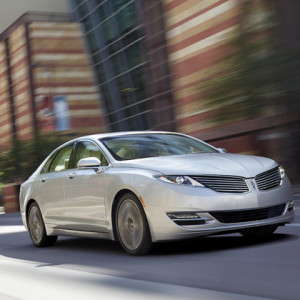In more and more urban areas, bicycles are becoming a viable alternative to driving. Congestion on the roads and the high price of gasoline are driving commuters to two-wheeled, human-powered transport in increasing numbers. Of course, biking to work can be a sweaty, exhausting prospect in some areas. Is it worth the tradeoff? We recently had the opportunity to sample a different approach, in the form of BMW’s new Cruise e-Bike.
Electric bicycles are nothing new, either. BMW’s take is different for two reasons: First, it adapts to the rider’s input rather than providing all of the power (meaning that it doesn’t require a license in areas that regulate powered bicycles), and second, it’s got BMW’s elegant-precision styling.
You might not expect there to be much to style on a bicycle, but BMW gives the e-bike a distinctive look, thanks to an arched “bullneck” frame that borrows lines from BMW cars. The frame is hydroformed and lightweight. A BMW badge and silver star pattern on the lower bar provide additional visual interest. Twenty-six-inch rims are used, and the saddle is provided by Selle Royal Freccia.
The electronic assist comes courtesy of a 250-watt electric motor integrated in the pedal bearings. It’s powered by a 400 Wh battery. It’s a very subtle push, only used to augment the rider’s input on the pedals. The Cruise e-Bike matches the rider’s input and keeps pedaling resistance the same when the bike is going uphill or into a headwind and taking the worst of the work out of it. Three sensors measure speed, pedaling frequency and torque to smoothly manage power assistance. A Bosch Intuvia control computer provides speed information, battery life, and allows the rider to select a riding mode, choosing between zero and 225 percent support from the motor. The Cruise e-Bike provides assist up to about 15 mph. Range is about 62 miles with a full charge, and the battery charges in about three and one-half hours.
The Cruise e-Bike features a Shimano 10-speed derailleur, disc brakes front and rear and puncture-resistant tires. A hub dynamo-powered light is available. The front fork is suspended, with about 3 inches of spring travel. Keeping the realities of city life in mind, the frame-mounted battery pack requires a key to remove, and the Intuvia control computer has a quick-release.
It’s a decently balanced bike. Total weight is about 48 pounds, but the additional weight of the battery and motor are carried integral to the frame so it doesn’t feel awkward. It’s a reasonably nimble urban bike, and provides a unique commuting alternative for urban travelers.
The Cruise e-Bike goes on sale in Europe in 2014, with a starting price of about $3,800.







